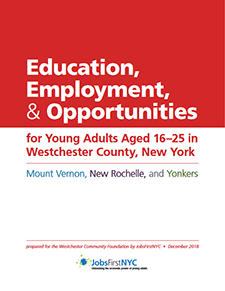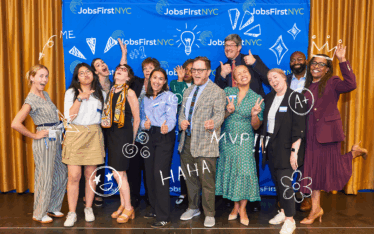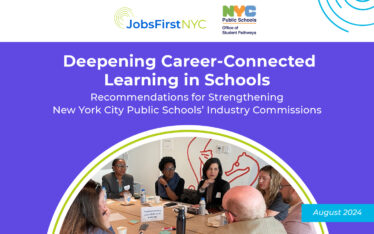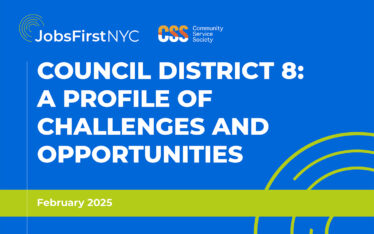An estimated 10% (22,000) of Westchester County young adults aged 16–25 are out of school and out of work (OSOW). Stakeholder engagements in three cities—Mount Vernon, New Rochelle, and Yonkers—have shed light on a significant need for comprehensive social, educational, and employment opportunities for young residents in each city. Further, they have revealed limited coordination between employers and workforce development agencies (as well as among workforce development agencies themselves), a lack of services and knowledge about available services, a need for more training and education programs, limited transportation options in high-demand employment areas, and an overall lack of skills for in-demand job sectors. Many young adults are employed in low-wage sectors with few career path opportunities and have little to no knowledge of the variety of resources or post-secondary options available to them.
Nonprofit, government, education, and skills-training institutions need to align their agendas and build collaborative relationships to catalyze public and private investments aimed at developing talent-pipeline solutions that create outcomes for young adults, offer skilled employees to small and large businesses alike, and incentivize local economic growth by bringing untapped young adult talent into the labor market.
RECOMMENDATIONS FOR EMPLOYERS, THE WORKFORCE DEVELOPMENT COMMUNITY, AND LOCAL GOVERNMENTS
- Foster and build relationships between employers and workforce development agencies. Improve the mechanisms for creating relationships between employers and workforce development agencies. Formalize partnerships between employers, local economic development agencies, and business chambers, with training and education programs to inform employment skills training.
- Develop a clearinghouse of services and craft a communications strategy. Ensure that community resources are comprehensively mapped and easy to find. There needs to be an understanding of the types of services available to the community and young adults, as well as a place where that information can be accessed and updated.
- Invest in skills development and education and training programs that respond to market demands. Integrate soft skills development into education and training programs. Invest in more employment training and education programs that respond to local job demands in sectors such as construction, health care, and education.
- Develop a service delivery partnership. Develop a service delivery strategy that is visible, broadly shared, shaped by multiple stakeholders, and addresses challenges related to mental health, criminal justice, affordable housing, and childcare.
- Explore transportation options. Devise public transportation options that provide access to places of employment with high demands for talent.





